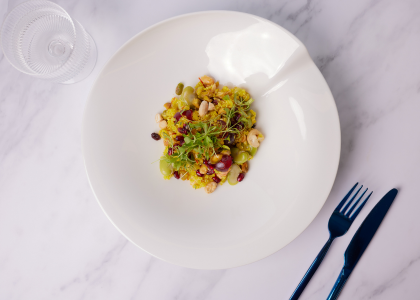5 Tips for Publishing Recipes from an Award-Winning Food Writer
 Learn the five key ingredients to professionally written recipes for publication
Learn the five key ingredients to professionally written recipes for publication
“Add a handful of this, a pinch of that and Bob’s your uncle!” – Your family recipe, scribbled on one of many stained pages in the kitchen’s cookbook cupboard.
Is your infamous chocolate cake requested at every social gathering? Do you have timeless pasta recipes which have been handed down through generations? From advanced pastry chefs to the head of the family kitchen, there is a wealth of recipe knowledge waiting to be shared. Food has brought people together since history and you no longer need to be a celebrity chef to publish your recipes for others to enjoy. So where do you begin
With some expert guidance from Carli Ratcliff, an award-winning food and travel writer who has over a decade of experience in publishing international content for BBC Good Food, Vogue Living and SBS Feast magazine, these five tips will help you start your recipe writing journey.
- Ensure you have enough material.
Whilst minimalism is definitely trending, a cookbook still needs to share a valuable amount of recipes. If you are wanting to write your first cookbook, you can begin with estimating how many recipes your book will contain. There is an average of 150 recipes in a cookbook, but it is common for authors to publish cookbooks showcasing 50 to 100 of their holy grail recipes or over 300 for a wide collection. For single recipes, the length of the content also needs to be considered to provide benefit to the reader. Although there is no rule for how long or short a recipe should be, it is important that each recipe has enough substance to make it on its own. By matching the vision for your cookbook or recipe with the value your reader will receive, you will start off on the right page.
- Identify your audience.
Who, where and why would someone want to read your recipes? Understanding your audience is the key to writing an impactful recipe and will set up your publication for success. Who you are writing to will help you decide the overall theme, the language, whether your recipes are for beginners or experienced cooks, and what kind of images or design you envision your readers will connect with.
- Test your recipes, they must work!
There’s nothing like the disappointment of following a new recipe which results in the dish being overcooked or burnt and ending up in the bin. Not testing a published recipe is more common than you think and it can leave a bad taste in the reader’s mouth… literally. Recipes which do not work as described are a sure-fire way to tarnish your reputation or trust with your audience. After writing your recipe, always test it before publishing!
- Be exact in your measurements, grammar and your writing.
Einstein famously said, “If you can't explain it to a six-year-old, you probably don't understand it yourself”. Successful recipes are clearly written, easy to follow and appeal to the language of the target audience. It is also important to ensure your recipe has correct spelling, grammar, and a consistent tone. Although there is a one-letter difference in tsp and tbsp, it is easy for authors to overlook this common fail in measurements or forget to translate casual terms like ‘a handful’ or “a little bit” to the metric cooking measurements in your audience’s country. These details are key elements in refining your recipe writing from novice to professional and will build confidence with your readers.
- Decide on your channel to publish.
The difference between a recipe which has gone viral online and a recipe which has received a handful of visits on your blog is the publication selection and marketing/PR approach. When you understand where your audience sources recipes, such as what stores they are likely to visit or what websites or social media channels they follow, you will provide a greater opportunity for your recipes to be discovered. After all the time and energy you have dedicated to creating your cookbook, this last step is a crucial one to get out what you have put in.
Many aspiring food authors underestimate the time it takes to put together all the basic elements of a recipe or cookbook. Without guidance and knowledge from an experienced writer, many published cookbooks go unnoticed or lack the ingredients to a successful recipe. With these five key tips by Carli Ratcliff you can begin finding ways to educate yourself on writing and publishing recipes and furthermore, align yourself on the path to becoming a distinguished food writer.


 Learn the five key ingredients to professionally written recipes for publication
Learn the five key ingredients to professionally written recipes for publication